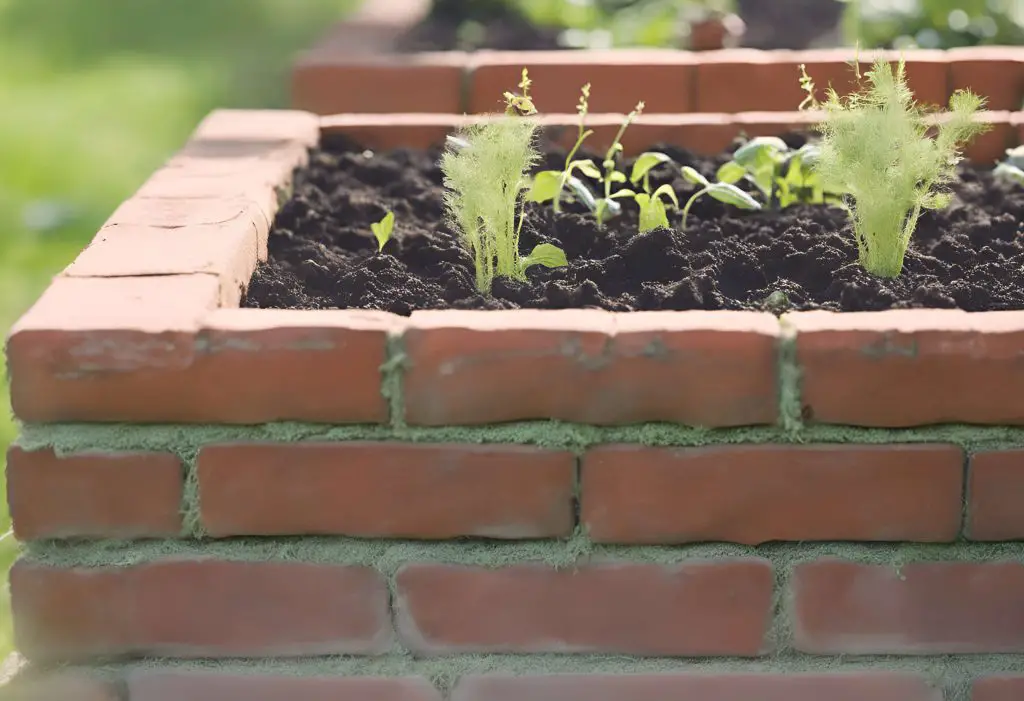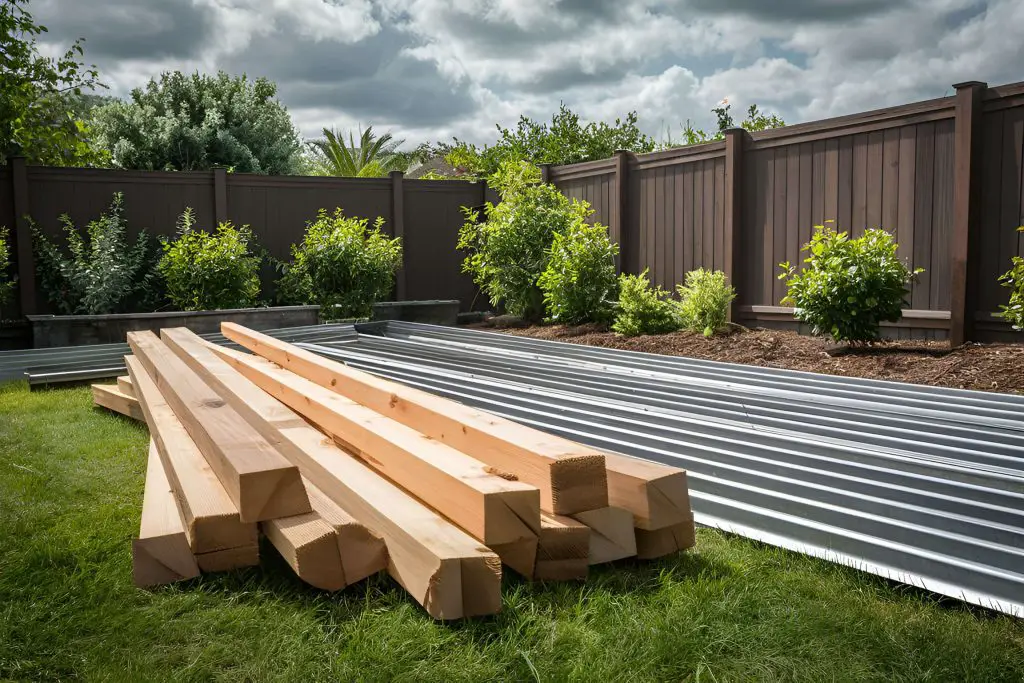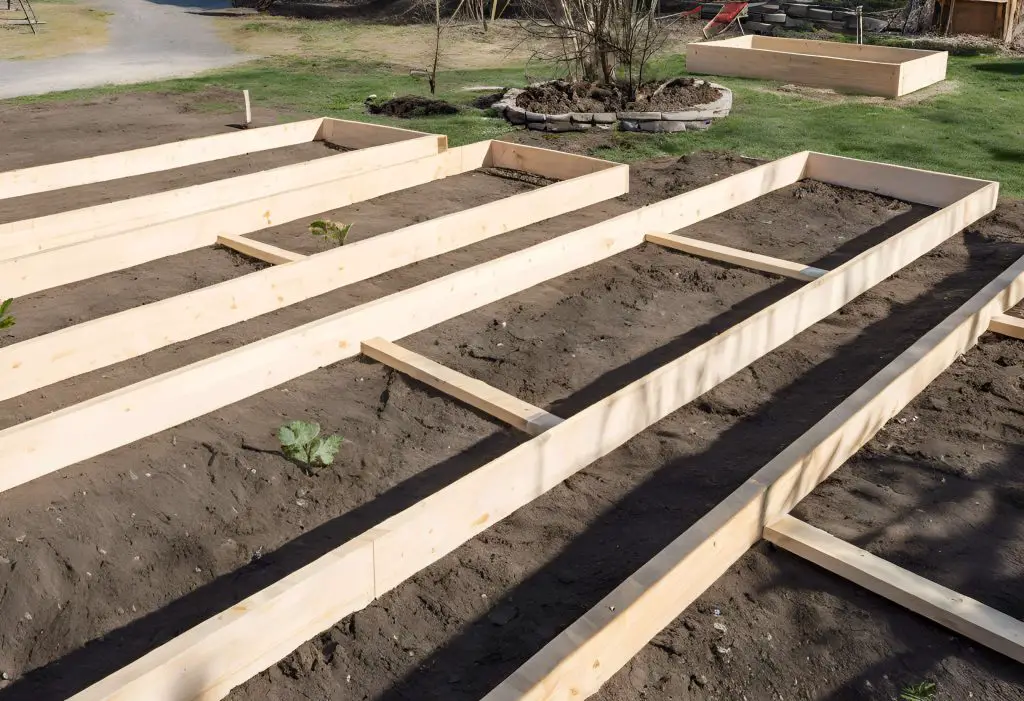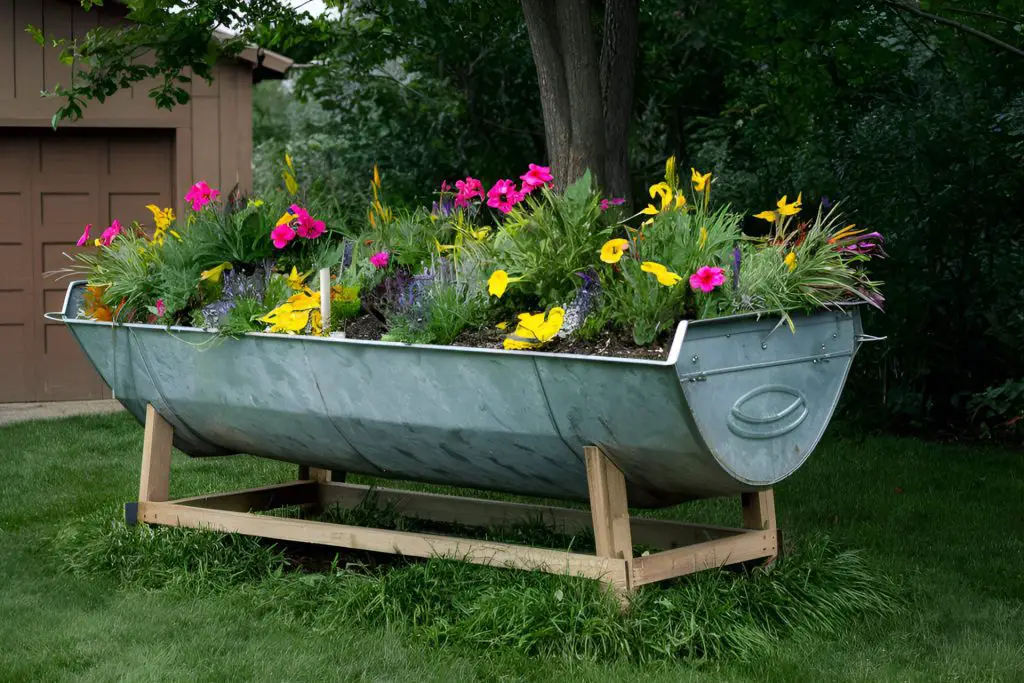Raised Garden Beds: Why You Should Have Them and How to Build Them
Control! If there was a single word that could sum up the reasons that many gardeners are moving away from traditional ground gardening woes and building raised garden beds, it is because of control. There are a myriad of ways that raised bed can give you more control, be it from a growing perspective, a practical perspective or even from an aesthetic point of view raised bed increase your control.
From bolstering soil quality 9 including better soil management, improved drainage and aeration) to warding off annoying weeds, and an elongated growing season, raised beds are the unsung heroes of the gardening world.
What Is the Point of Raised Beds?

Not just a stylish garden accessory, raised beds address some of the most common gardening challenges that ground beds provide head-on. Whether you have subpar garden soil conditions or seeking relief from the physical demands of gardening, raised beds stand out as a practical and effective solution. Their promise? A more fruitful, accessible, and joyous gardening experience for everyone, from the green-thumbed veterans to those just starting with gardening.
Using raised beds can be a transformative approach to your gardening. They can providesoil conditions tailored to your garden’s needs, a longer window for your gardening pursuits, and offer ingenious solutions to age-old gardening challenges.
Practical Benefits
Raised beds offer a multitude of practical benefits that revamp both the productivity and ease of access of your garden space. Aimed at enhancing plant health, optimizing limited spaces, or making gardening a more inclusive pastime, raised beds stand as a sturdy pillar of support.
A Leap in Soil Quality
Employing raised beds allows you to take control of the quality of your garden’s soil. By filling your raised beds with a custom blend of soil, you unlock a world where your plants revel in nutrient-rich foundations, which will help you achieve more vibrant growth and bountiful harvests.
Superior Drainage and Aeration
Say goodbye to the dread of waterlogged roots. Raised beds excel in promoting excellent drainage and aeration, key components for healthy root systems. Elevated from the ground, these beds ensure that water flows through smoothly, and air circulates freely, contributing to stronger and more resilient plant life.
Stretching the Growing Season
With raised beds, your gardening calendar extends its boundaries. These beds warm up faster in the spring and retain their warmth longer, granting you the luxury of planting earlier and harvesting later. This extended growing season is a boon for gardeners looking to maximize their garden’s output.
The Battle Against Weeds
Raised beds act as a fortress against the invasion of unwanted weeds. By providing a clear separation between your garden and the vast wilderness of your yard, they minimize the competition for water and nutrients, letting your plants flourish.
Mastering Space Efficiency
Embrace the art of space optimization with raised beds. By eliminating unnecessary walkways and maximizing vertical space, these beds are perfect for gardeners working with compact areas, be it a tiny backyard or a balcony oasis.
Accessibility Redefined
Gardening should be a pleasure, not a pain. For those facing mobility challenges, raised beds are a game-changer. Designed at varying heights, they invite everyone to indulge in the joy of gardening, minimizing the strain on your back and knees.
Weighing the Costs and Benefits
While setting up raised beds might require an upfront investment, the slew of benefits they offer, such as reduced soil amendment expenses and fewer hours spent combating weeds, often tip the scales in their favor over time.
Let’s explore further the materials and methods that can bring your raised garden dreams to life, including insights on choosing the right material for your garden’s aesthetic and functional needs. Whether you’re drawn to the warmth of wood, the durability of metal, or the elegance of stone, the right choice can elevate your garden’s character and longevity.
What is the Right Material for Your Raised Garden Bed
Selecting the right material for your raised garden bed is more than a practical decision; it’s about bringing your gardening dreams to life. Whether you lean towards the rustic appeal of wood or the sleek look of metal, your choice will shape the landscape of your garden. Let’s delve into the options, from the natural warmth of cedar to the modern vibe of galvanized steel, and find the perfect match for your garden’s personality and your gardening needs.
Wood: The Natural Choice
Wooden raised beds, a sight familiar to many gardeners, evoke a sense of tradition and harmony with nature. Cedar and redwood are stars in this category, thanks to their resistance to rot and pests, ensuring your garden bed stands the test of time. Not just durable, these wood types offer a cozy, organic backdrop for your vegetable and flower gardens to thrive.
Metal: Modern and Durable

If you’re aiming for longevity and a touch of contemporary flair, metal beds could be a good choice. Generally built from galvanized steel, they promise durability and a sleek appearance. Although they might catch more sun, potentially heating the soil, their resilience against pests and extreme weather makes them a wise choice for gardeners seeking minimal maintenance and maximum style.
Stone or Brick: Elegance Personified
For those who favor permanence and elegance, stone, brick, or rendered concrete block-raised beds add a timeless touch to your garden space. While they demand more effort in construction, their durability and excellent heat retention properties make them a fortress for your plants. These materials not only elevate the aesthetic appeal of your garden but also provide a stable, nutrient-rich home for your plants to flourish.
Plastic or Composite: Convenient and Versatile
In the realm of garden beds, plastic and composite materials offer unparalleled ease of assembly and mobility. Available in an array of colors and styles, they adapt seamlessly to any garden design. Though they may not boast the longevity of natural materials, their lightweight and versatile nature make them ideal for gardeners looking for a fuss-free gardening solution.
Designing Your Raised Garden Bed
Building your own raised bed is a fulfilling project that reaps rewards season after season. Here’s how to create a foundation for your garden that’s both productive and pleasing to the eye.
Material Selection: A Critical First Step
As we have discussed, choose a material that resonates with your garden’s style and your personal ethics. Whether it’s the natural resilience of cedar, the industrial chic of galvanized steel, or the enduring charm of brick, the material you select lays the groundwork for your garden’s success and aesthetic.
You can also look to repurpose household items as a raised garden shed. You can create imaginative garden features by upcycling enamel baths, fridges, filing cabinets and other old metal items into raised garden beds.
Tailoring Your Raised Bed: What You Need
The size and shape of your raised bed can make a significant difference in its functionality. A standard dimension is 4 feet by 8 feet and is accessible from all sides, ensuring ease of maintenance without stepping into the bed, which can compact the soil and hinder plant growth.
Assembly: Bringing Your Vision to Life
The construction process varies with the material:
- For wood beds, assembling the frame with screws or corner brackets is straightforward, and lining the inside with plastic sheeting can extend its lifespan.
- Metal bed kits often come ready to assemble, offering a quick and easy setup.
- For stone beds, laying out your first layer to ensure it’s level, then stacking additional layers, creates a sturdy and permanent structure.
Soil and Filling: The Heart of Your Garden
Fill your bed with a blend of topsoil, compost, and amendments like peat moss or vermiculite. This mix ensures optimal drainage, nutrient content, and soil structure for vigorous plant growth.
Irrigation: Keeping Your Garden Quenched
Adequate watering is crucial, especially in raised beds where drainage is more efficient. Installing a drip irrigation system or using soaker hoses can ensure your plants receive the right amount of water without waste.
Constructing a raised bed yourself enhances your gardening experience, making it more productive, enjoyable, and suited to your lifestyle. Whether your garden graces a sprawling backyard or a cozy balcony, a well-designed raised bed can turn your gardening dreams into reality.
Building Your Raised Garden Beds

Creating your own raised bed can turn into a rewarding endeavor that enriches your garden for years to come. Here’s a streamlined approach to erecting a foundation that’s as productive as it is picturesque.
The Basics
As we have discussed picking the right material should not just the aesthetic appeal but also consider the ethical implications. Whether drawn to the decay-resistant qualities of cedar, the industrial aesthetics of galvanized steel, or or other metal raised beds. the timeless look of brick or inventive use of composite materials , your choice sets the stage for your garden’s success.
Positioning Your Raised Bed
Opt for a bed size that allows easy access from all sides—commonly, 4 feet by 8 feet—to avoid stepping on the soil. This prevents soil compaction, which can impede plant growth, and ensures ease of maintenance.
Putting It Together: A Step-by-Step Approach
- Wood beds require cutting boards to length and securing them with screws or corner brackets. Protecting the inside with plastic sheeting can extend their life.
- Metal kits often arrive ready for easy assembly, providing a straightforward setup option.
- Constructing stone beds involves laying the first layer level, then stacking additional layers for a durable build.
Soil and Filling: The Core of Your Garden
Mix topsoil, compost, and amendments like peat moss or vermiculite to fill your bed, ensuring your garden boasts the ideal drainage, nutrient balance, and soil structure for thriving plant life.
Watering Wisely: Ensuring Plant Health
Proper hydration is essential, particularly in raised beds where soil can drain more efficiently. A drip irrigation system or soaker hoses can deliver water directly to plant roots, minimizing waste and ensuring your garden stays lush and productive.
Embracing these steps leads to the creation of a raised bed that not only elevates your gardening experience but also brings joy, beauty, and bounty to your outdoor space. No matter the size of your garden, from expansive yards to intimate balconies, a thoughtfully designed raised bed can bring your gardening visions to life.
Tailoring Raised Beds to Tackle Specific Gardening Challenges
Raised garden beds are not just a gardening trend; they’re a powerful solution to several common gardening hurdles. By understanding how to tailor these elevated platforms to your specific needs, you can transform your gardening experience from laborious to effortless and rewarding.
Conquering Poor Soil Conditions
In areas where the native soil is less than ideal or contaminated, raised beds come to the rescue. Filling these beds with a custom blend of topsoil, compost, and other organic materials creates a perfect environment for vegetable plants and flowers. This approach bypasses the challenges of improving native soil quality, offering a quicker route to gardening success.
Optimizing Space in Small Gardens
Gardeners dealing with limited outdoor space find raised beds a godsend. By maximizing vertical space and eliminating the need for traditional row spacing, these beds make efficient use of every square inch. Whether it’s a small backyard or a balcony, raised beds enable you to cultivate a lush garden in the smallest of footprints.
Making Gardening Accessible to Everyone
Raised beds can be designed at various heights, making gardening accessible for individuals with limited mobility or those who find bending and kneeling challenging. This thoughtful adaptation ensures that everyone can enjoy the therapeutic benefits of gardening without physical strain.
Enhancing Drainage and Preventing Soil Erosion
Areas prone to heavy rainfall or with poor drainage can benefit significantly from raised beds. By elevating the soil above ground level, these beds ensure better water runoff, reducing the risk of root rot and soil erosion. This advantage is particularly crucial for maintaining healthy plant growth and soil quality.
Planting Strategies for Raised Bed Gardening
Embarking on the planting phase in raised bed gardening opens up a realm of possibilities for achieving a harmonious and productive garden.
Preparing the Groundwork
Before introducing plants to your raised bed, ensure it’s filled with a balanced mix of soil, compost, and amendments. Achieving the right soil composition is critical for providing a nurturing environment where plants can flourish. Proper drainage and aeration, coupled with nutrient-rich soil, set the stage for healthy root development and robust plant growth.
Selecting and Spacing Your Plants
Choosing the right plants for your raised bed involves considering their mature size and sunlight requirements. With the improved soil conditions and drainage raised beds offer, a wide array of vegetables, herbs, and flowers can thrive. Plan your garden layout to give each plant ample space to grow, reducing competition and promoting a healthier, more productive garden.
Keeping Your Raised Garden Thriving

Maintaining a raised bed garden requires a bit of know-how, especially when it comes to watering and fertilizing.
Watering With Precision
Due to their efficient drainage, raised beds may require more frequent watering than ground-level gardens. Implementing a drip irrigation system ensures that water is delivered directly to the plant roots where it’s needed most, conserving water and promoting healthy plant growth.
Fertilization: Feeding Your Garden
The nutrient-rich environment in a raised bed can deplete over time. Regular application of a balanced fertilizer and annual incorporation of compost replenish these vital nutrients, ensuring your garden continues to thrive.
Preparing Raised Beds for Winter
As the growing season winds down, preparing your raised beds for winter can protect the soil and set the stage for next year’s garden.
Clearing and Covering
Removing spent plants and covering the soil with organic mulch or a frost cloth helps to protect it from winter weather, preserving soil structure and microbial life.
Structural Maintenance
Inspect and repair any structural issues in wooden or metal beds to prevent deterioration over the winter months, ensuring your raised beds are ready to go when spring arrives.
Raised bed gardening is a versatile and rewarding approach to cultivating a productive and beautiful garden. By addressing specific gardening challenges and employing strategic planting and maintenance techniques, gardeners can enjoy bountiful harvests and lush landscapes year after year.
The Underrated Benefits of Raised Bed Gardening
Raised beds aren’t just about solving soil issues or making gardening more accessible; they bring a slew of often-overlooked advantages that make them a top choice for gardeners. Let’s shine a light on these hidden gems, from enhancing your garden’s aesthetic to creating microclimates that can extend your growing season.
A Garden That’s Easy on the Eyes
One of the first things you’ll notice about raised beds is how they can transform the look of your outdoor space. With their neat, defined borders, they add an element of structure and order, turning a chaotic backyard into a tidy flower garden or a productive vegetable garden. Whether it’s the rustic charm of cedar beds or the sleek edges of metal frames, raised beds can be a design feature in their own right.
Keeping Pests at Bay
Gardeners are all too familiar with the battle against slugs, snails, and other pests that see your plants as an all-you-can-eat buffet. Raised beds offer a strategic advantage, elevating your precious plantings out of reach from many common ground pests. For those with burrowing foes, a layer of mesh at the bottom of the bed can add another line of defense, protecting your roots from unwelcome visitors.
Mastering the Microclimate
One of the secret superpowers of raised beds is their ability to create microclimates. Depending on how you position them and the materials used, you can warm up the soil faster in spring or keep it cooler during hot spells, giving you a leg up in extending your growing season. This can be especially beneficial for capsicum, tomatoes, and other warmth-loving vegetables.
Water Wisdom: Maximizing Every Drop
In today’s world, where water conservation is more critical than ever, raised beds encourage smart water use. Their compact, contained nature means you can target watering directly to your plants’ roots, reducing runoff and evaporation. This not only saves water but ensures your plants get just what they need without wasting a drop.
Streamlining Garden Management
Imagine having your garden so organized that every task, from planting to harvesting, becomes more streamlined. Raised beds compartmentalize your gardening efforts, making it easier to manage crop rotation, pest control, and planting schedules. This organization can lead to higher yields and less time spent on garden chores, allowing more moments to simply enjoy the beauty of your garden.
Raised bed gardening goes beyond just practical benefits, offering a multifaceted approach to garden design, pest management, climate control, water conservation, and ease of maintenance. These additional perks solidify why raised beds continue to be a favored choice among gardeners, combining functionality with aesthetic appeal to create thriving gardens that are as beautiful as they are productive.
